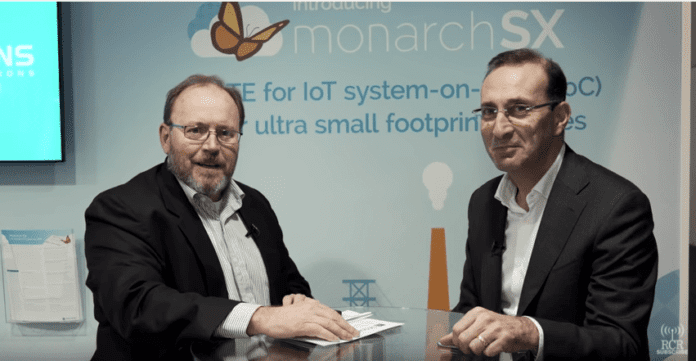With its new SoC, Sequans includes LTE connectivity along with the horsepower necessary for increasingly complex IoT applications
At this point, there are well established IoT use cases like wearables, environmental sensing and asset tracking, but when the connectivity power of 5G is factored in, the internet of things is really only bounded by the imagination of developers and other ecosystem stakeholders.
Sequans was an early mover in the IoT chipset space, seeing quick carrier certification of its Cat M1 and NB-IoT Monarch solution. Now, in order to support the future of IoT development, the French company has added what CEO Georges Karam referred to as the “horsepower” necessary to take IoT to the next level.
Karam spoke with RCR Wireless News on the sidelines of Mobile World Congress 2017, in Barcelona, Spain. Sequans used the global industry event as an opportunity to launch its new Monarch SX system on a chip.
Building on the Monarch platform, for Monarch SX Sequans further incorporated an ARM Cortex-M4 processor, media processing engine, sensor hub, GPU, display controller, and a wide range of interfaces for things like USB, screen, microphone, battery, GNSS, SIM card, secure element, Wi-Fi, Bluetooth Low Energy, keyboard, accelerometer, gyroscope and other sensors.
Karam said the idea was “to give to the developer of some application, in one solution, fully-integrated not only the LTE technology but also the horsepower you need to build some sophisticated application.” He said the benefit of putting all of that functionality onto a single piece of silicon with a small form factor is, first, price, but also size, power consumption and ease of use. “Sequans now is able to give you a full solution, ready in hand, where you have the application software running on the Cortex-M4 with all that’s needed to run your media devices or use graphics, and, at the same time, get the LTE.”
To explain the difference between Monarch and Monarch SX, he gave the example of a simple metering device that just requires “a light processor and only a communications modem. If that’s all you need, then you go with Monarch. If you have an application where maybe you have a small screen and some interfaces to manage, like a wearable where you run a sophisticated operating system, then you go with Monarch SX.”
Karam also discussed a recent LTE-M project with major European and Latin America carrier Telefonica. He said the rest of the world is lagging behind the U.S. in terms of LTE-M adoption with three major carriers—AT&T, Verizon and T-Mobile—all rapidly deploying the technology. Earlier this year Telefonica and Sequans conducted the first live LTE Cat M1 data call in Europe, as Telefonica moves toward an LTE-M network launch to support IoT. At Mobile World Congress, Telefonica and eight other tier 1 global operators confirmed their intention to deploy LTE-M.
“For us,” Karam said, “it was an opportunity to expand. That’s why we engaged with Telefonica—to show that we are going beyond the United States in terms of deployment.” He also cited activity in Japan, Korea and China. “It’s really going on a worldwide scale…all this LTE-M. All the carriers are going for this. There’s no doubt about it; it’s happening.”
To learn more about Sequans, click here.

